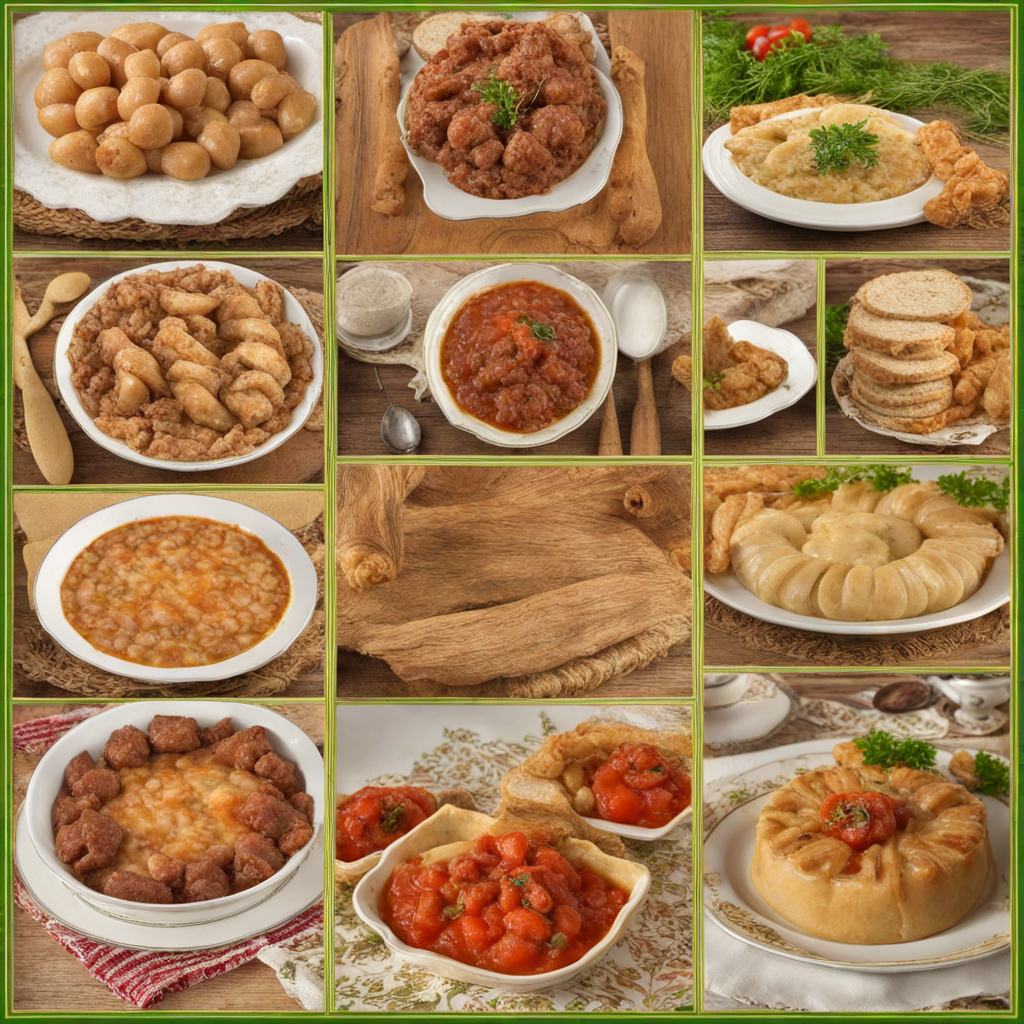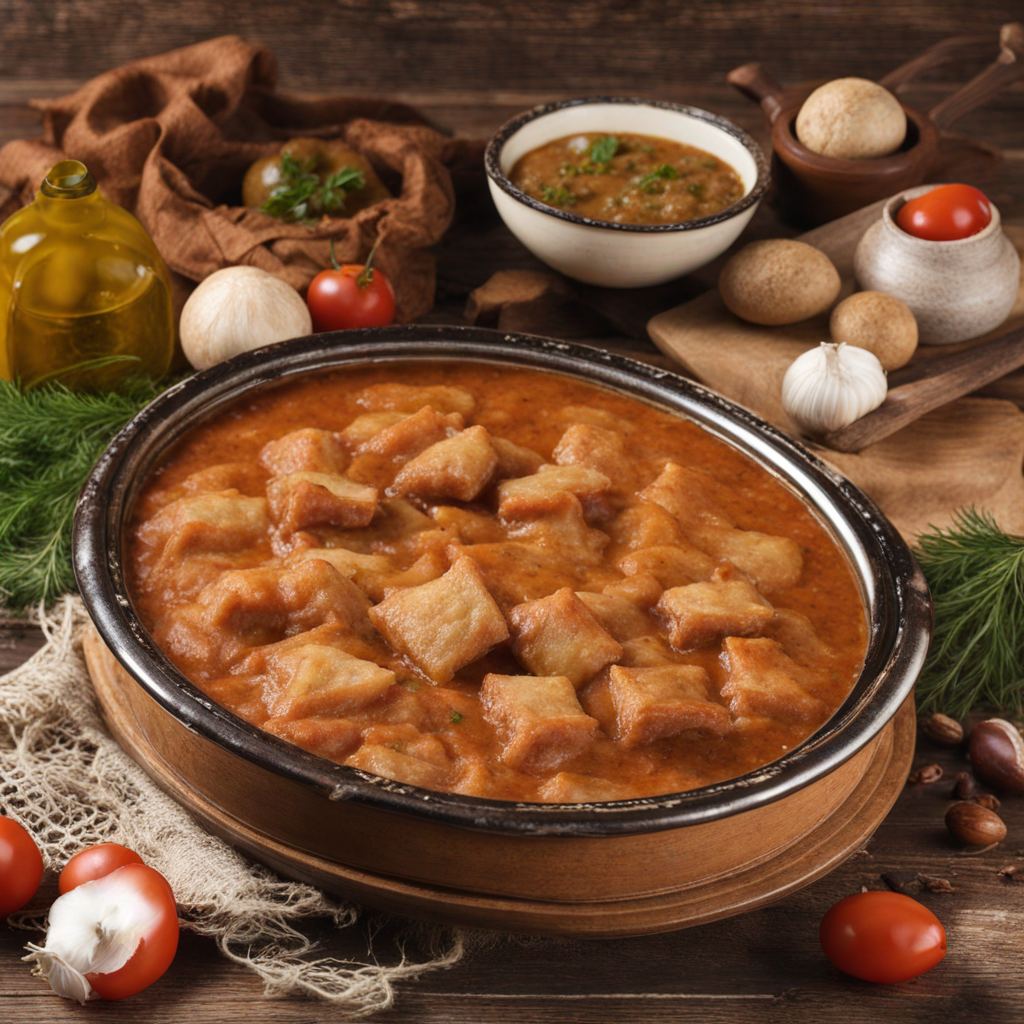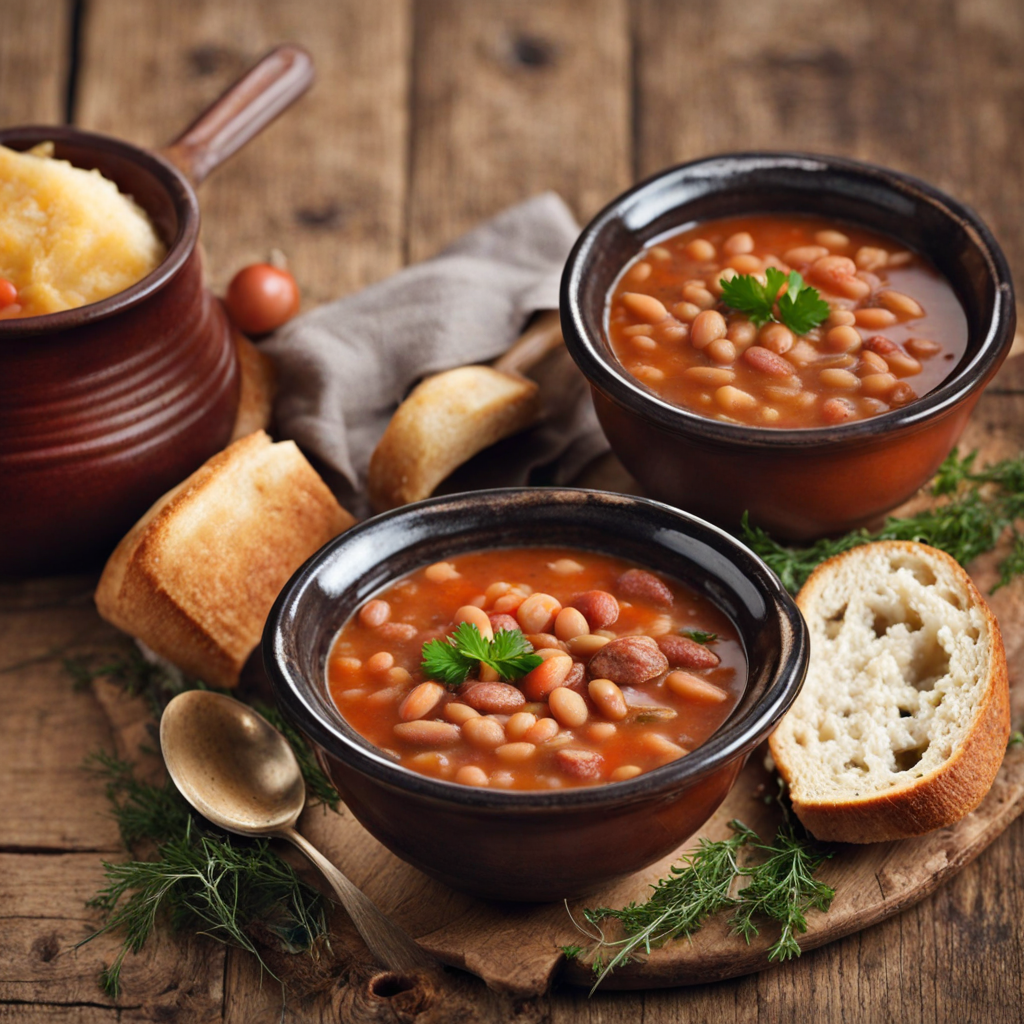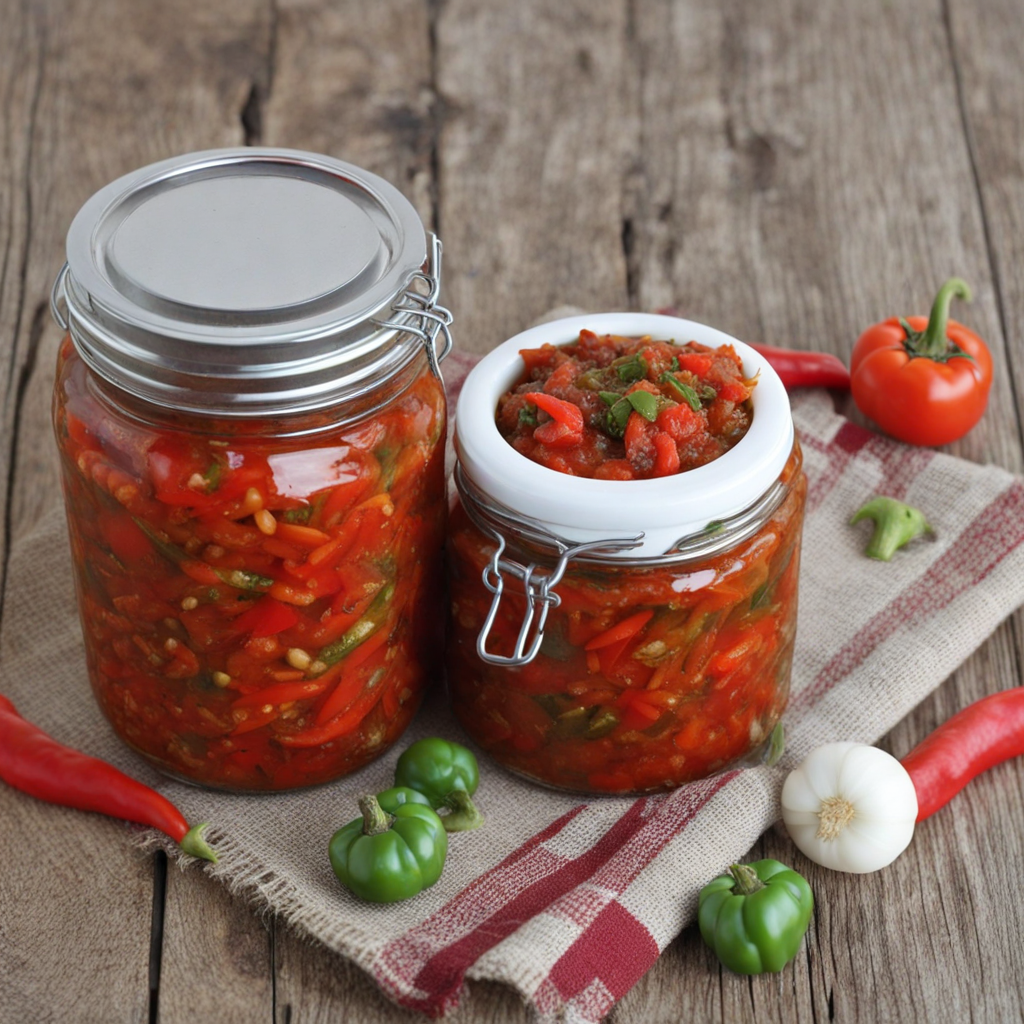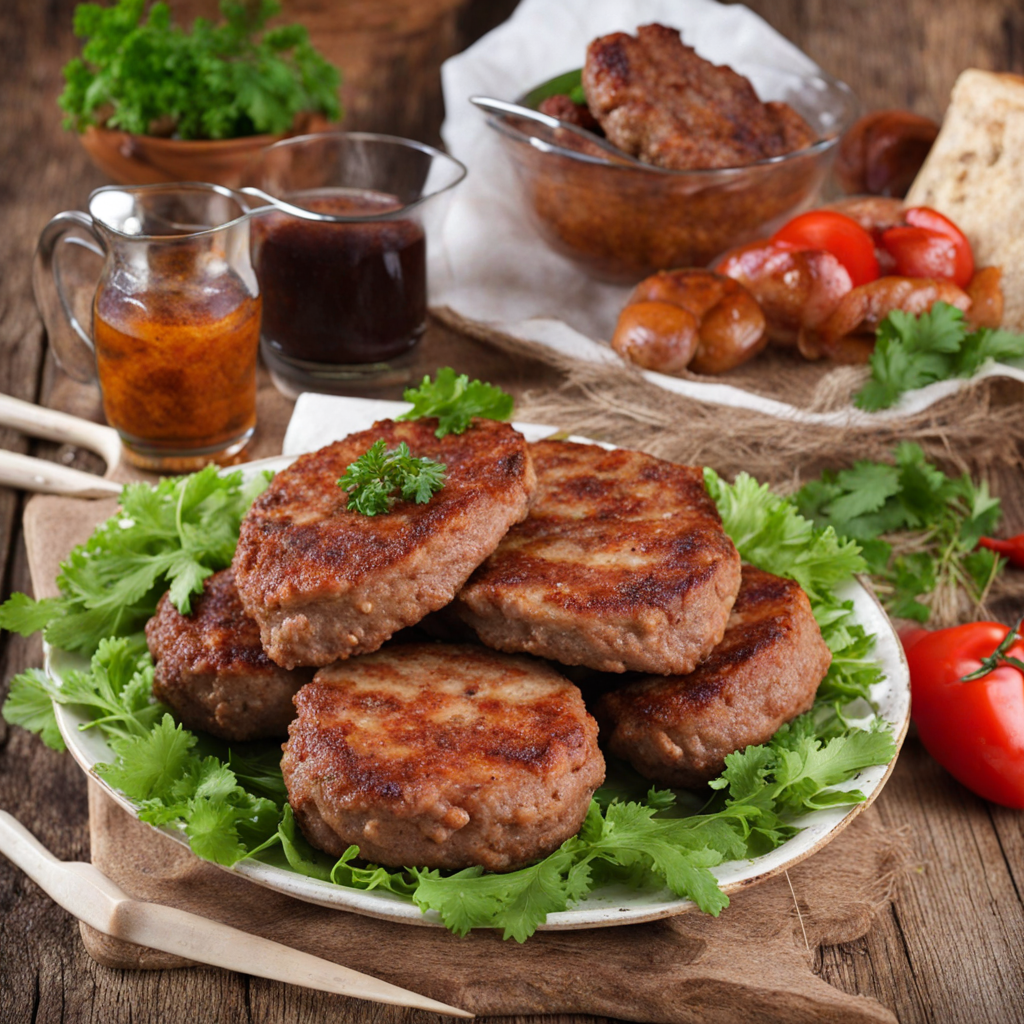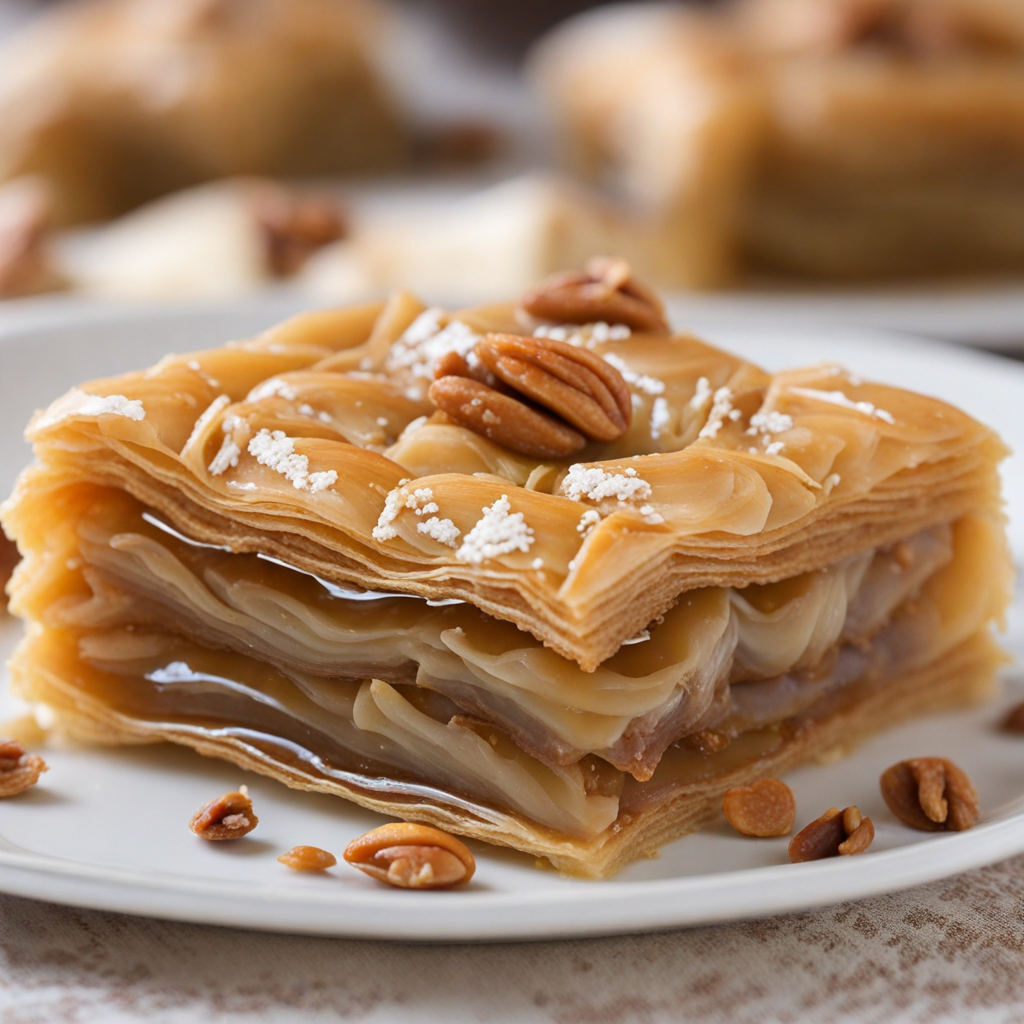Posna Jela
Posna Jela, or "Lenten Dishes," is a delightful culinary tradition in Serbia, particularly embraced during the fasting periods. These meals are characterized by their vibrant flavors and wholesome ingredients, focusing on plant-based options that exclude meat, dairy, and eggs. The dishes often feature staples such as beans, lentils, grains, and a variety of vegetables, showcasing the rich agricultural heritage of the region. The use of herbs and spices, like paprika and garlic, enhances the natural tastes, creating satisfying and hearty meals that can easily win over even the most devoted meat lovers. One of the most beloved Posna Jela is "Sarma," which consists of cabbage rolls filled with a mixture of rice, smoked paprika, and various herbs, simmered in a tangy tomato sauce. This dish embodies comfort and warmth, perfect for family gatherings. Another popular choice is "Pita," a flaky pastry stuffed with a variety of fillings, including pumpkin, potatoes, or mushrooms, often seasoned with fresh dill. Each bite of Pita is a delightful combination of textures, crispy on the outside while tender and flavorful on the inside, making it a staple during both festive and everyday occasions. For those looking to explore the world of Posna Jela further, "Čorba" (a hearty soup) and "Prebranac" (baked beans with onions and spices) offer a glimpse into the soul of Serbian cuisine. These dishes not only celebrate the simplicity and richness of plant-based ingredients but also reflect the country's communal spirit, as they are often enjoyed with family and friends. Posna Jela is more than just food; it is a culinary journey that connects tradition, culture, and health, inviting everyone to savor the diverse and delicious flavors of Serbia.
How It Became This Dish
The History of Посна јела (Posna Jela) in Serbian Cuisine Origins of Posna Jela The term "Posna jela," which translates to "fasting dishes," refers to a variety of meals traditionally consumed by Orthodox Christians in Serbia during periods of fasting. These periods are deeply woven into the fabric of Serbian religious life, with the most significant fasting periods including Lent, the Nativity Fast, and various other minor fasts throughout the year. The origins of Posna jela can be traced back to the early Christian practices of abstaining from certain foods as a form of spiritual discipline. Fasting in Christianity is not merely a matter of abstaining from food; it is a time for reflection, penance, and spiritual renewal. As such, the foods consumed during these periods are often simple, humble, and devoid of animal products, emphasizing grains, vegetables, legumes, and fruits. Cultural Significance In Serbian culture, food is more than just sustenance; it is a vessel for tradition, community, and identity. Posna jela reflects the broader cultural ethos of the Serbian people, emphasizing values such as family, sharing, and the connection between the earthly and the divine. During fasting periods, families often come together to share meals that are both simple and nourishing, reinforcing bonds and creating a sense of unity. The religious significance of Posna jela is deeply tied to the Orthodox calendar. Fasting not only serves as a spiritual exercise but also as a means of preparing the faithful for major religious events, such as Easter and Christmas. The preparation and sharing of these meals often involve rituals and customs that have been passed down through generations, ensuring that the practices of the past remain alive in contemporary Serbian culture. Development Over Time As with many culinary traditions, Posna jela has evolved over the centuries, influenced by a variety of factors, including geography, historical events, and cultural exchanges. The influence of the Mediterranean diet, Ottoman culinary practices, and even Austro-Hungarian traditions can be seen in the diverse ingredients and cooking methods employed in modern Posna jela. 1. Medieval Roots: In medieval Serbia, the fasting practices were closely linked to the monastic lifestyle, where asceticism was paramount. Monks often prepared meals that adhered to strict fasting rules, utilizing locally available ingredients. These meals were typically made from grains, beans, vegetables, and herbs, laying the groundwork for what would later become the foundation of Posna jela. 2. Ottoman Influence: The Ottoman Empire's long rule over Serbia introduced new ingredients and culinary techniques. Spices, vegetables, and methods such as grilling and stewing made their way into Serbian kitchens. This integration enriched the variety of Posna jela, with dishes like stuffed peppers and stews becoming staples during fasting periods. 3. Austro-Hungarian Influence: The Austro-Hungarian Empire also left its mark on Serbian cuisine. The introduction of pastries and the use of techniques such as baking expanded the repertoire of Posna jela. Sweet fasting dishes, like strudels filled with poppy seeds or fruits, became popular, allowing for a more diverse and satisfying fasting experience. 4. Modern Adaptations: In contemporary Serbia, the significance of Posna jela has remained strong, even as lifestyles have changed. With increased globalization and the rise of health-conscious eating, there has been a renewed interest in plant-based diets, making Posna jela appealing to a wider audience. Many traditional recipes have been adapted to include modern ingredients, reflecting current culinary trends while retaining their cultural significance. Key Dishes in Posna Jela While Posna jela comprises a wide variety of dishes, some key staples have emerged, each with its own story and significance. 1. Sarma (Stuffed Cabbage Rolls): Traditionally made with rice and minced meat, the fasting version substitutes meat with mushrooms or more rice, often flavored with herbs and spices. This dish represents the blending of flavors and cultures, showcasing the versatility of simple ingredients. 2. Pasulj (Bean Soup): A hearty bean soup made with white or kidney beans, Pasulj is often enriched with smoked paprika and served with a drizzle of olive oil. This dish epitomizes the concept of comfort food during fasting, providing nourishment and warmth. 3. Pita (Savory or Sweet Pies): Fasting pitas, filled with vegetables, mushrooms, or fruits, are a favorite during fasting periods. The flaky pastry symbolizes the celebration of life, even during times of abstinence. 4. Riblja Čorba (Fish Soup): On the days when fish is permitted, Riblja čorba becomes a highlight of the fasting table. The rich, flavorful broth made from various fish showcases the importance of using available resources and reflects the connection to the Danube River and other water bodies in Serbia. Conclusion Posna jela is more than just a collection of fasting recipes; it encapsulates the history, spirituality, and communal essence of Serbian culture. As a culinary tradition that has evolved over centuries, it bears witness to the resilience and adaptability of the Serbian people. In modern times, while the traditional practices remain, there is also a growing movement to embrace sustainability and health-consciousness, leading to new interpretations of these beloved dishes. Ultimately, Posna jela serves as a reminder of the importance of food in building community, preserving heritage, and nurturing the spirit. Whether shared at a family gathering or enjoyed in solitude during a reflective moment, the fasting dishes of Serbia continue to nourish both body and soul, bridging the past with the present and ensuring that the rich culinary tradition of Serbia remains vibrant for future generations.
You may like
Discover local flavors from Serbia


